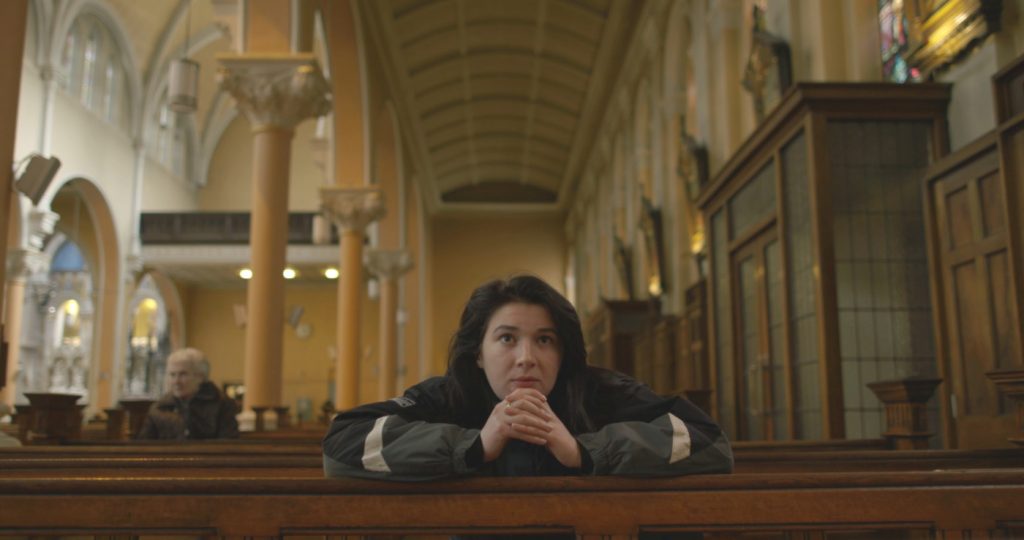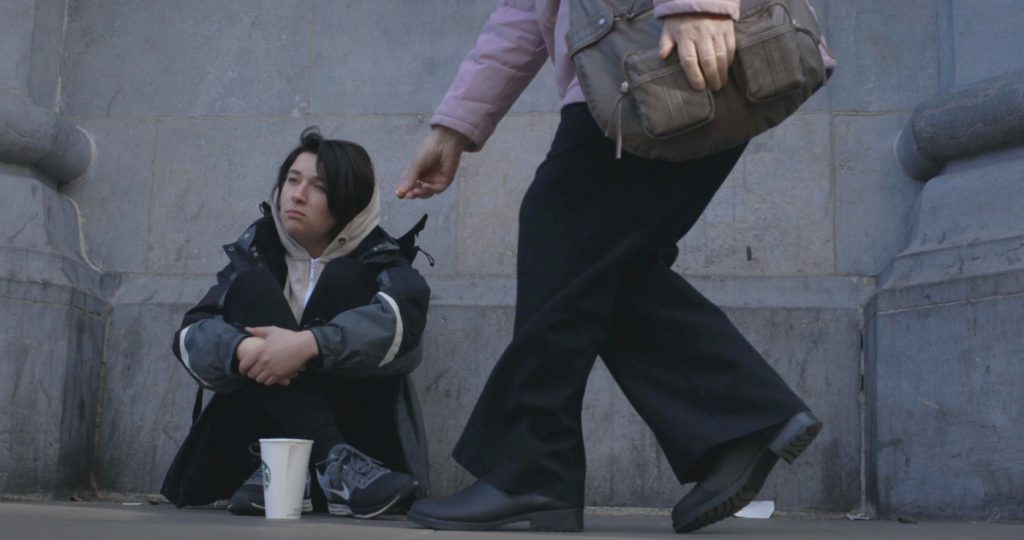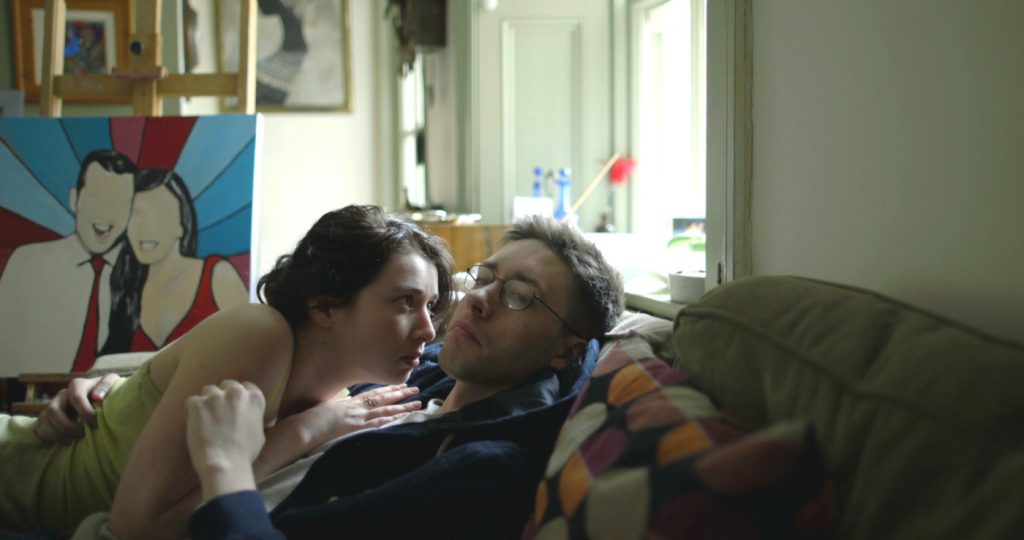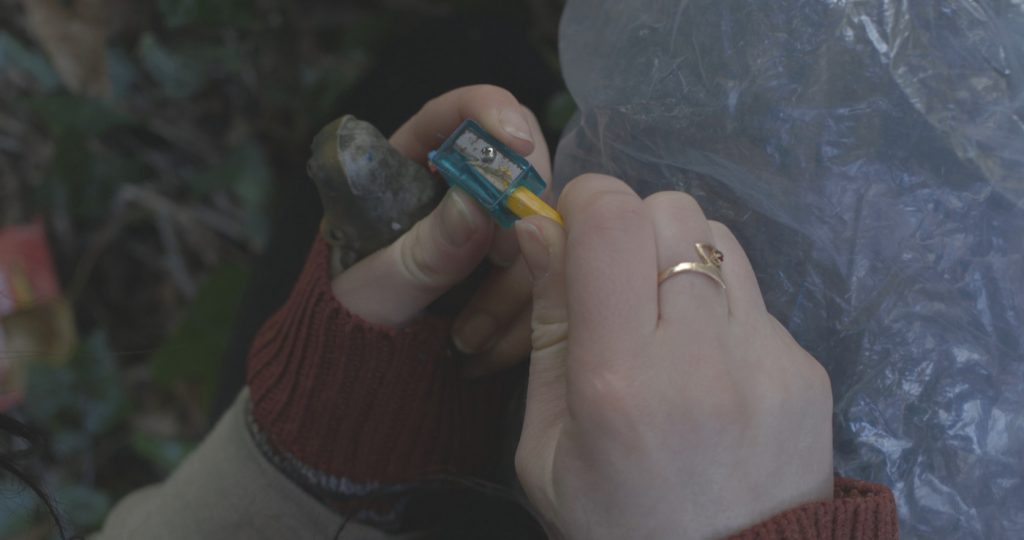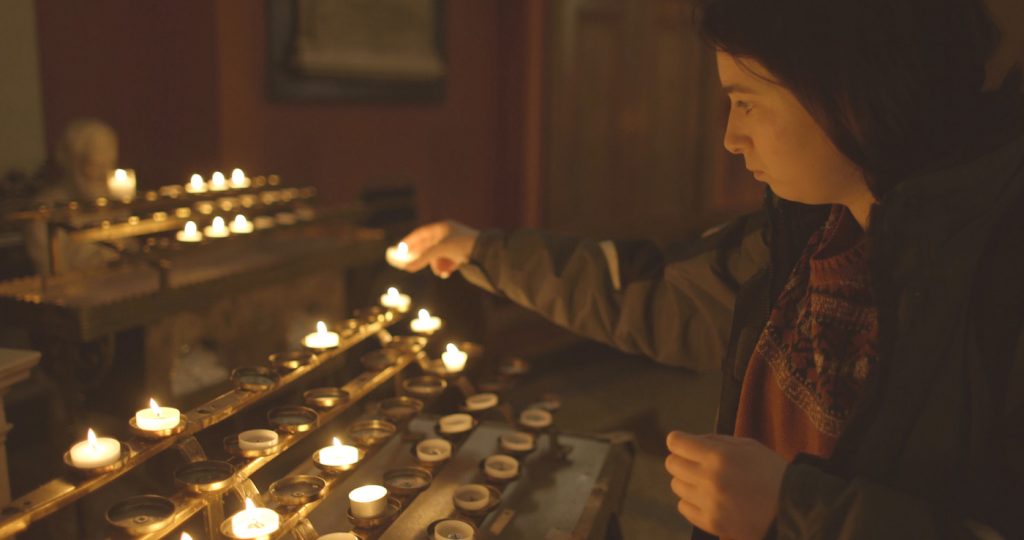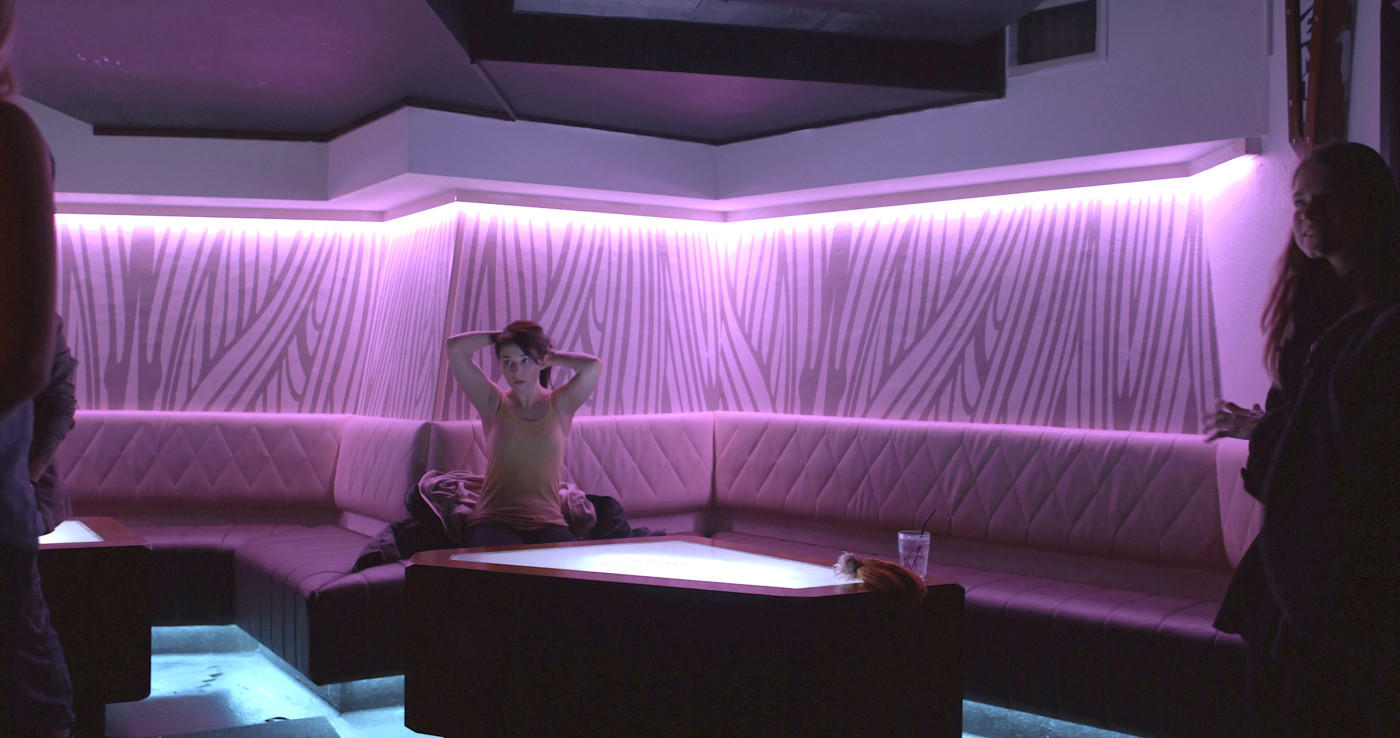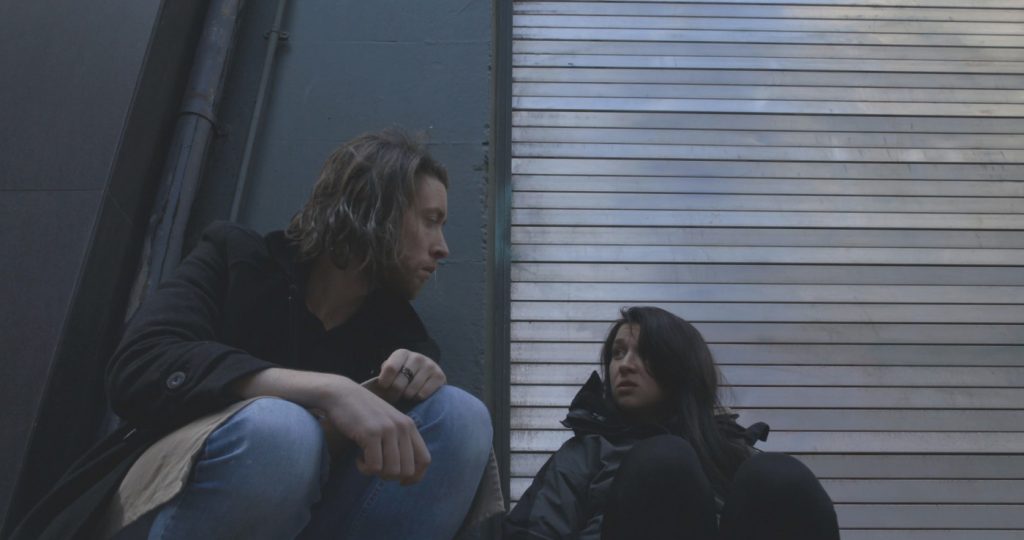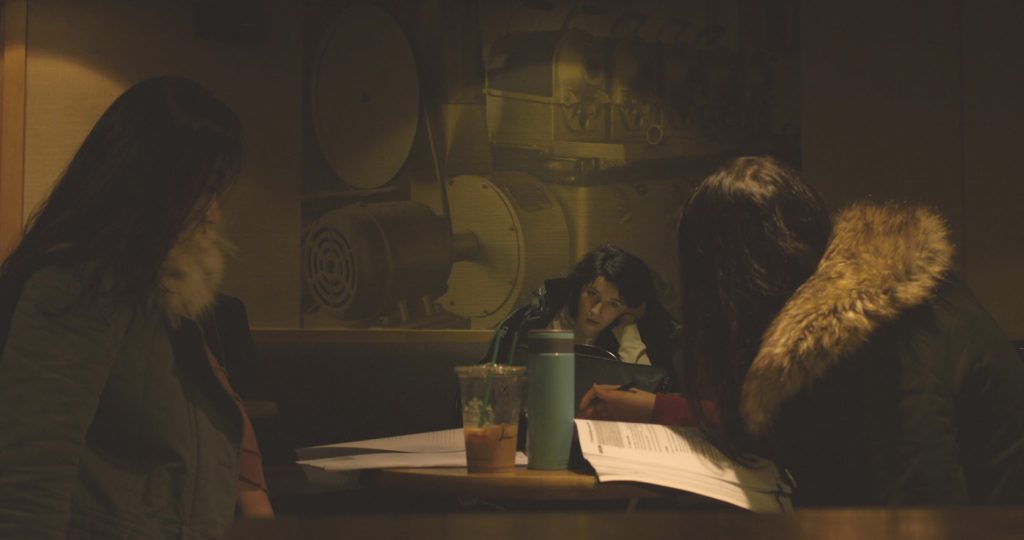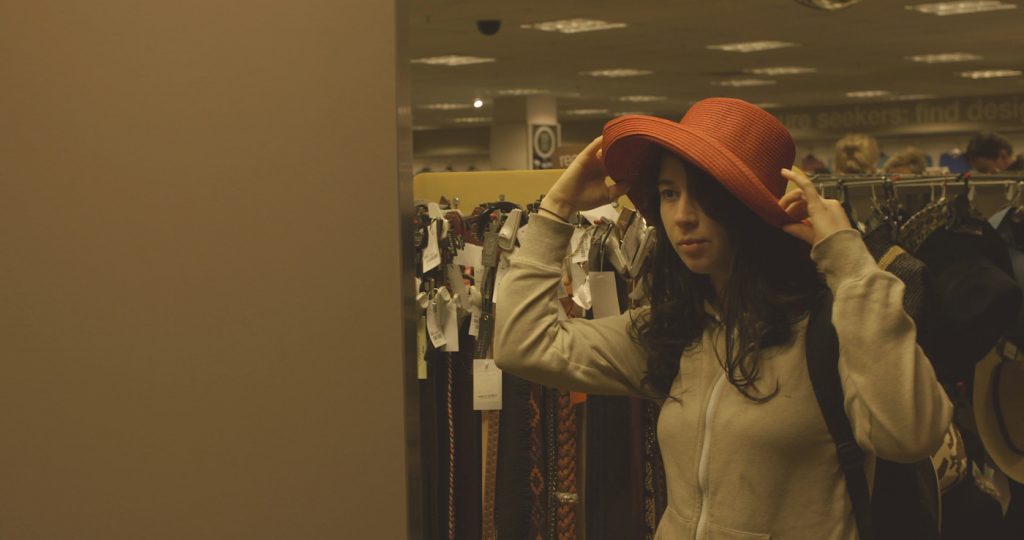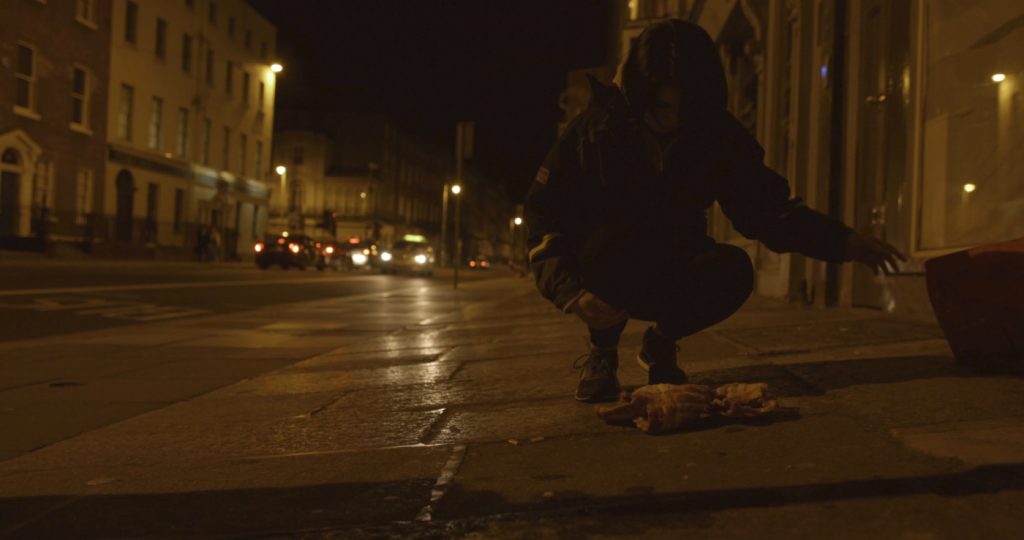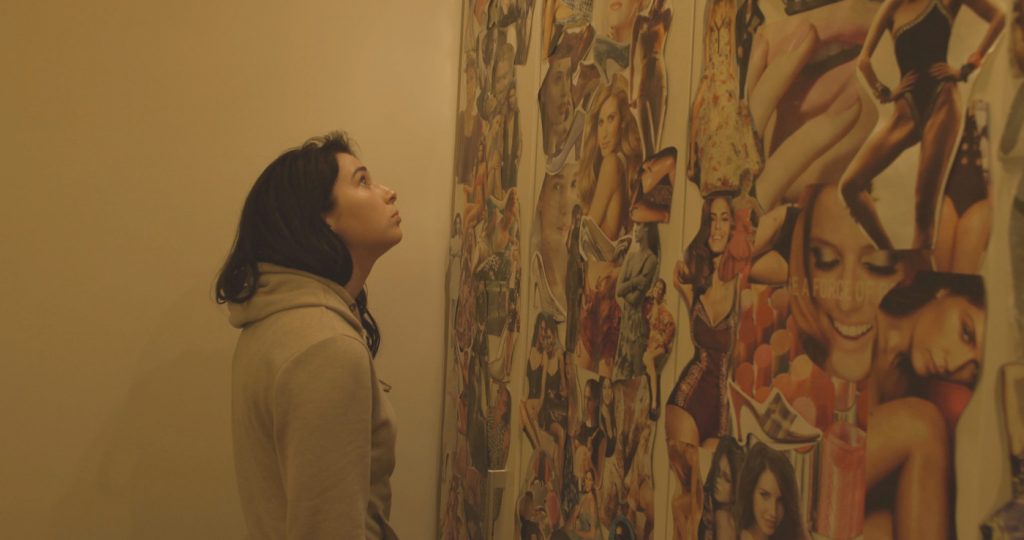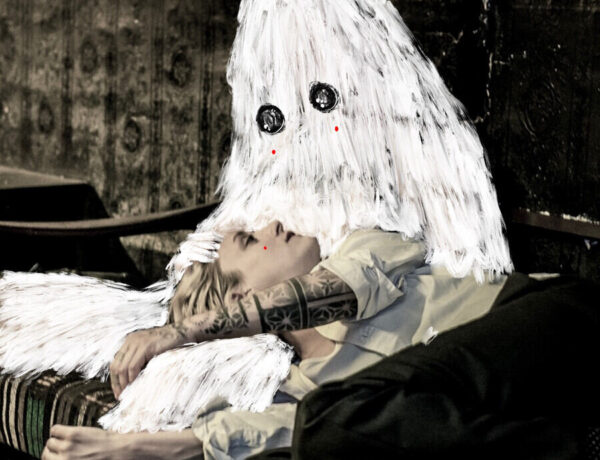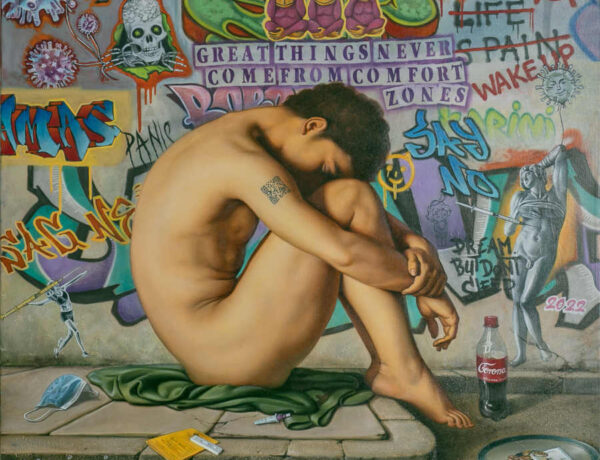Irish filmmaker Graham Jones’ latest work – Nola and the Clones – follows the story of a young homeless girl on the streets of Dublin, where she encounters a series of men eerily similar to one another. “It’s realism with a touch of magic realism,” Jones says.
The girl, played by Caoimhe Cassidy, is trapped within the limitations of society – and thus, her gender. At one point, she tells a man that she: “wishes she could not be her gender anymore”. She is caught up in survival and “survival sex” – sexual favors in exchange for basic necessities, as well as panhandling – the norm in homelessness; relying on the fickle kindness of strangers.
Jones, whose previous films include How to Cheat in the Leaving Certificate, Fudge 44, and The Green Marker Scare, is apart of the new style of filmmaking – Nuascannan – a term paying homage to Italian Neorealism, French New Wave, and Danish Dogme, and the avante-garde approach to experimental filmmaking which usually involves shooting on location with non-professional actors and using portable equipment, lending to these films a style bordering on documentary.
“Now,” Jones says, “the way films are shot, cut, mixed, and especially distributed is what we’re experiencing as the evolution from celluloid film to digital – its revolutionary.
The film came about,” he continues, “when I was volunteering at a homeless shelter years ago. I realized that individuals offering some of the greatest insight into society, sadly receive the least attention from it… this particular shelter was men-only, and got me wondering what female homelessness might be like – so over the years I sought to find out. Of course, it’s worse for women because there’s a far greater sexual threat and risk of falling into prostitution, either while homeless or to stave off homelessness… Nola is a strong female character, negotiating her way through a series of very difficult men, and we are trying to give her a voice.”
In an interview via bruisedknuckles.com, Jones talks about the “commodification of femininity… the myriad images of beauty programmed into girls at such a young age via the media, and programmed into boys as well… (in some ways) men have women in a kind of cultural bondage… (he agrees with the suggestion by Naomi Wolf that) as women have gradually become more powerful, patriarchal society has tried to increase their oppression with images of ‘beauty’.” In this way, media and advertising shapes both the way women feel about themselves, and how men feel women should be, look, act and behave. It’s twofold. Nola and the Clones hones in on these themes, and by placing Nola in the vulnerable streets of Dublin, she is forced to confront these subtle, societal implications and men – each and every day.
Where did the actual term “Nuascannán” come from? Was it coined by you (or who) and how?
I coined the term Nuascannán roughly a year ago, while writing an article about the future of cinema and did so simply by fusing the Irish words for ‘new’ and ‘film’ – although obviously the movement I describe is international in scope.
What kind of platforms, specifically, do you think best represent independent filmmakers work today (as well as in the near future)?
In my opinion the best platform for indie filmmakers in the 21st century is the ‘internet’ or ‘web’ or ‘online’.
But I hasten to add, those interchangeable terms will soon become redundant. Children growing up today may not even grasp the meaning of them in future. Perhaps a more future-proof and satisfying way to state this is: the best platform for indie filmmakers is digital, because it has no borders or limitations or limits. It’s just data. If a piece of filmmaking has meaning, it can now reverberate in infinity, or ‘go viral’ as they say.
Great movies could not truly go viral in the old days. Although film lasted longer than digital, it was far harder to distribute and so a movie could be great and simply die for commercial reasons or even circumstantial ones. I suspect many great movies have been lost forever, sadly. Whereas nowadays movies don’t risk getting lost in the same way. Nowadays, movies are data and the kingmakers the audience. It’s not all about the critics. Indeed, the very concepts of audience and critic are merging and it probably won’t be possible for us to ever completely separate them again.
Now that we convey movies digitally, they can end up on a person’s phone or in a massive auditorium. While the cost of a phone and auditorium may differ, the cost of transmitting the digital file is really no different. So, to answer your question, it would appear the independent filmmaker’s platform is the digital realm and all that encompasses…
How do you feel about film festivals, big and small?
I have been a guest at so many over the years and always enjoy the experience, both in terms of meeting people who appreciate my work and moreover getting to see the work of others. But I would like to see the media broaden its focus when it comes to film festivals. There are 3000 such events in the world and the notion that only 10 are important is a foolish notion. That’s just an inside track, insular and elitist – and precisely why the digital revolution is a revolution. Because it deconstructs those kinds of arenas and allows filmmakers create their own.
You mention that today there is no longer the need for an army of workers in a film production… that people can just get up and go as in French New Wave cinema and Italian Neorealism. What are the various difficulties posed to today’s filmmakers versus filmmakers from bygone eras? What are the downsides to not having that army and doing it all (mostly) on your own?
As far as I can tell, there’s only one downside. Just one. Which is that it’s now a lot harder to make a film people will notice, that will turn heads. But that’s only really a downside to people who are conservative, elitist and like to keep the masses out. For the rest of us, it’s not what we call a downside. On the contrary, we recognize that it only means people will be forced to make better films, in order to stand out. That’s an upside. That’s progress!
What would you say consists of a modern-day experimental film (or what is the future of experimental film)?
The term ‘experimental film’ has always been a broad one and hopefully will always remain so. By definition, an experimental film can’t be straightforward to prescribe. It should be an assault on some level. I’ve thought about this for years, because I like to test boundaries and my own conclusion is that it’s really very personal. Experimenting means trying something new to you. But what that really means is: questioning your assumptions. One of the most important things in life is to question your assumptions – but it’s very difficult to know what your assumptions are! It’s like living in a glass house and not seeing the walls.
But that’s what an artist does. When I made The Green Marker Scare, The Randomers, and Nola and the Clones, that’s what I was doing – experimenting.
You mention in an interview the “cultural bondage” that in some ways, men have trapped women in… can you expand on this at all (as well as what you say is the “commodification of femininity”)?
There were a number of texts that influenced me when I was in my late teens and early twenties. One was called Women’s Ways of Knowing, which is a great book. But another very significant one was The Beauty Myth by Naomi Wolf. Wolf’s basic thesis is that as women have become more emancipated, patriarchal society has pushed back by using images of beauty against them. It’s a horrible notion, but completely true, in my opinion. The theory is that it’s implicit, not explicit – like a code, a secret language. Society’s way of warning women, not to get too above themselves, because they are always being measured by this arbitrary beauty ruler. Of course, that’s just what it seems like to me, as a man. I’m probably perpetuating it by talking about it. But that’s why I make films, to explore things honestly, rather than go round in circles.
In the film, Nola panhandles but also uses “survival sex” as a means to get by… can you talk about why you chose this route (a common one I’m sure, though I’ll be honest, I’d never heard of the term before!) for her to go down?
I hadn’t heard that term either, before Allison Pinski over at Bruised Knuckles used it, when writing about our movie. But I think she’s absolutely right, it’s precisely what Nola is engaged in. As for why I chose that milieu when writing the character, I just felt it was a valid way to dramatize that cultural bondage that I talked about, or that oppression that Wolf talks about. I wanted to show it dramatically and cinematically. I felt it would have been too subtle in an office environment, for instance. Or perhaps if the whole movie was set in nightclubs or pubs or in the United Nations or so many other places in the world where I believe sexism is rampant. On the street, a homeless girl faces many challenges and included among those challenges are the ones women face everywhere. You could say I needed an extreme version of something that is otherwise so ubiquitous that it’s become invisible. It was Caoimhe Cassidy who made it real for me.



